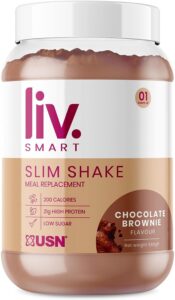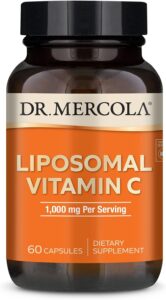Solgar 750 mg Spirulina Tablets review
 In this review, we’re excited to take a closer look at the Solgar 750 mg Spirulina Tablets. This natural dietary supplement comes in a pack of 80 tablets and offers a high concentration of nutrients. As advocates for overall wellness, we believe that adding this supplement to your daily routine can greatly benefit your health.
In this review, we’re excited to take a closer look at the Solgar 750 mg Spirulina Tablets. This natural dietary supplement comes in a pack of 80 tablets and offers a high concentration of nutrients. As advocates for overall wellness, we believe that adding this supplement to your daily routine can greatly benefit your health.
One of the key benefits of the Solgar Spirulina Tablets is that they provide a natural source of nutrients. Spirulina, a microscopic plant organism, is packed with vitamins, minerals, and antioxidants that can support our overall well-being. By incorporating these tablets into our diet, we can ensure that we’re getting essential nutrients that may be lacking in our daily meals.
Not owning this product, on the other hand, may mean missing out on these valuable nutrients. Without the Solgar Spirulina Tablets, it might be challenging to achieve the same level of nutrient intake that this supplement offers. We understand that maintaining a balanced diet can sometimes be difficult, and that’s where this product comes in handy. By taking advantage of this natural supplement, we can bridge the gap and support our overall health.
Liv.Smart Slim Chocolate Brownie 550g Review
 Liv.Smart by USN Slim Chocolate Brownie 550g is a high protein meal replacement shake that not only supports weight loss but also fits seamlessly into an active lifestyle.
Liv.Smart by USN Slim Chocolate Brownie 550g is a high protein meal replacement shake that not only supports weight loss but also fits seamlessly into an active lifestyle.
With 21g of high-quality protein and low in sugar, this shake is the perfect addition to a balanced diet.Packed with essential nutrients, vitamins, and minerals, Liv.Smart helps support safe and healthy weight loss. It’s easy to make and even easier to enjoy – just mix two scoops with water and shake.
Whether you’re looking for a quick and convenient meal replacement or a post-workout refuel, Liv.Smart is the delicious way to stay on track with your weight loss goals.
URBNFit Yoga Block Review
 Looking to enhance your exercise routine? Look no further than the URBNFit Yoga Block. These moisture-resistant high-density foam blocks are the ideal accessory for improving balance and flexibility. With their soft bevelled edges and compact size of 3x6x9”, they can be used in a variety of settings, such as yoga classes, the gym, Pilates, and meditation. Not only do they provide stability during poses, but they also help to deepen and elongate stretches while correcting alignment.
Looking to enhance your exercise routine? Look no further than the URBNFit Yoga Block. These moisture-resistant high-density foam blocks are the ideal accessory for improving balance and flexibility. With their soft bevelled edges and compact size of 3x6x9”, they can be used in a variety of settings, such as yoga classes, the gym, Pilates, and meditation. Not only do they provide stability during poses, but they also help to deepen and elongate stretches while correcting alignment.
Made from 100% EVA foam, these eco-friendly and recyclable blocks are non-toxic, chemical-free, and easy to clean. Whether you need yoga accessories for home or for a sweaty Bikram class, these durable, non-slip blocks are your answer. And if you’re searching for a unique holiday gift, you can mix and match the three available colors to create an attractive yoga set for a friend, complete with a bonus PDF workout guide. Discover the perfect balance on and off the mat with the URBNFit Yoga Block.
Te-Rich Skipping Rope Review
 Looking for a fun and efficient way to burn calories and stay fit? Look no further than the Te-Rich Skipping Rope Adult Fitness. This digital speed jump rope is equipped with a backlit LCD screen that tracks your calorie consumption, jump count, and training duration.
Looking for a fun and efficient way to burn calories and stay fit? Look no further than the Te-Rich Skipping Rope Adult Fitness. This digital speed jump rope is equipped with a backlit LCD screen that tracks your calorie consumption, jump count, and training duration.
With weighted handles and an adjustable rope length, this exercise equipment provides a full-body workout for people of all ages and heights.
Plus, the ropeless design allows for tight space workouts without the risk of tripping. Made of durable materials and backed by a lifetime friendly customer care guarantee, the Te-Rich Skipping Rope is built to last. Get ready to jump your way to better health and fitness with this versatile and effective exercise tool.
Sportsnew Yoga Mat Bag Large Review
 We are excited to introduce the Sportsnew Yoga Mat Bag, a durable and versatile accessory designed to enhance your yoga and pilates experience. Made with high-quality fabric, this lightweight bag is built to withstand everyday wear and tear. With its spacious main pocket, it can easily accommodate most standard yoga mats.
We are excited to introduce the Sportsnew Yoga Mat Bag, a durable and versatile accessory designed to enhance your yoga and pilates experience. Made with high-quality fabric, this lightweight bag is built to withstand everyday wear and tear. With its spacious main pocket, it can easily accommodate most standard yoga mats.
But it doesn’t stop there – this bag also features a separate wet compartment, perfect for storing your wet towels or sweaty gym clothes. Not only that, but it also includes additional side pockets for your smartphone, credit cards, keys, and even a water bottle. And with its adjustable shoulder strap, you can carry your mat and all your essentials comfortably wherever you go.
Say goodbye to the hassle of carrying multiple bags, and say hello to convenience and style with the sportsnew Yoga Mat Bag.
Dr. Mercola Liposomal Vitamin C Dietary Supplement Review
 We’ve come across a game-changing product that we believe can greatly benefit your health and well-being – the Dr. Mercola Liposomal Vitamin C Dietary Supplement. This supplement is specifically designed to support your immune system and provide you with the essential nutrients your body needs. With liposomal technology, this product offers superior bioavailability and protection for your gastrointestinal system.
We’ve come across a game-changing product that we believe can greatly benefit your health and well-being – the Dr. Mercola Liposomal Vitamin C Dietary Supplement. This supplement is specifically designed to support your immune system and provide you with the essential nutrients your body needs. With liposomal technology, this product offers superior bioavailability and protection for your gastrointestinal system.
Without the Dr. Mercola Liposomal Vitamin C Dietary Supplement, you may miss out on its incredible benefits.
Your immune system may not be as strong, making you more susceptible to illnesses and infections. Plus, without the protection of the liposomes, the vitamin C may not be absorbed as effectively by your body. You’ll also want to make sure you look for a non-GMO, soy-free, and gluten-free option, like this one, to avoid any potential allergies or sensitivities.
In this review, we’ll be taking a deeper look into the Dr. Mercola Liposomal Vitamin C Dietary Supplement. We’ll explore its unique features, the advantages it offers, and any potential drawbacks. So, stay tuned as we uncover everything you need to know about this remarkable product!
SlimFast Ready to Drink Shake 18-Pack Review
 Get ready to revolutionize your weight loss journey with the SlimFast Ready to Drink Shake 18-Pack Multiple Flavours.
Get ready to revolutionize your weight loss journey with the SlimFast Ready to Drink Shake 18-Pack Multiple Flavours.
Say goodbye to boring and time-consuming meal prep, and say hello to a convenient and delicious way to shed those unwanted pounds. With each shake containing just 206 kcal, you can confidently replace one meal with a flavorful shake that will leave you feeling satisfied and energized.
The bundle includes a variety of tempting flavors, including Café Latte, Chocolate, and Strawberry, ensuring that you never get bored of your weight loss routine. It’s time to make your weight loss goals a reality with the SlimFast Ready to Drink Shake 18-Pack Multiple Flavours.
Overview of The Paleo Diet
 The paleo diet is one of the most popular diets today. Originating from the Paleolithic period, this diet focuses on eating whole and unprocessed foods as a way to reduce risk of chronic diseases like obesity, diabetes, and hypertension.
The paleo diet is one of the most popular diets today. Originating from the Paleolithic period, this diet focuses on eating whole and unprocessed foods as a way to reduce risk of chronic diseases like obesity, diabetes, and hypertension.
The paleo diet consists mainly of fish, meat, eggs, fruits, nuts, seeds, and non-starchy vegetables. In general, it prohibits foods that can be classified as grains (such as rice and wheat), beans or legumes (like soybeans or peas), dairy products (such as milk and yogurt), or sugars (such as honey).
The benefits of this restrictive diet are numerous: an increased intake of vitamins and minerals; weight loss; improved blood sugar control; a reduction in inflammation; and better management of conditions like rheumatoid arthritis.
Overview of The Low-Carb Diet
 If you’ve recently decided to start a new diet and lose weight, then you’re probably considering one of the many low-carb diets that have become very popular in recent years.
If you’ve recently decided to start a new diet and lose weight, then you’re probably considering one of the many low-carb diets that have become very popular in recent years.
The low-carb diet is a nutrition plan that restricts the intake of carbohydrates to 20-40 grams per day or less. There are various variations of the low-carb diet, with different recommendations on what type of carbs should be avoided and which can be eaten in smaller quantities.
There are many benefits of this particular diet, including improved insulin sensitivity, blood lipid profile, and an increase in lean body mass. But what exactly is the low-carb diet? Is it safe to follow? And how do you start? Keep reading to find out!
Overview of The Plant-Based Diet
 A plant-based diet has been gaining popularity throughout the world. It’s not uncommon to see celebrities, influencers, and even your friends posting photos of their plant-based meals on Instagram.
A plant-based diet has been gaining popularity throughout the world. It’s not uncommon to see celebrities, influencers, and even your friends posting photos of their plant-based meals on Instagram.
However, you may be wondering what exactly is a plant-based diet. A plant-based diet refers to a type of eating plan that focuses on fruits, vegetables, nuts, and legumes – or in other words, plants.
A plant-based diet has many health benefits including lowering your risk of heart disease and Type 2 diabetes. The healthy eating plan can also help increase your intake of vitamins, minerals, and fibre; all things that can often be found in abundance in plant foods.
If you’re looking for a way to improve your health by reducing animal fats and increasing the amount of fruits and veggies you eat – then read on for everything you need to know about going plant-based!